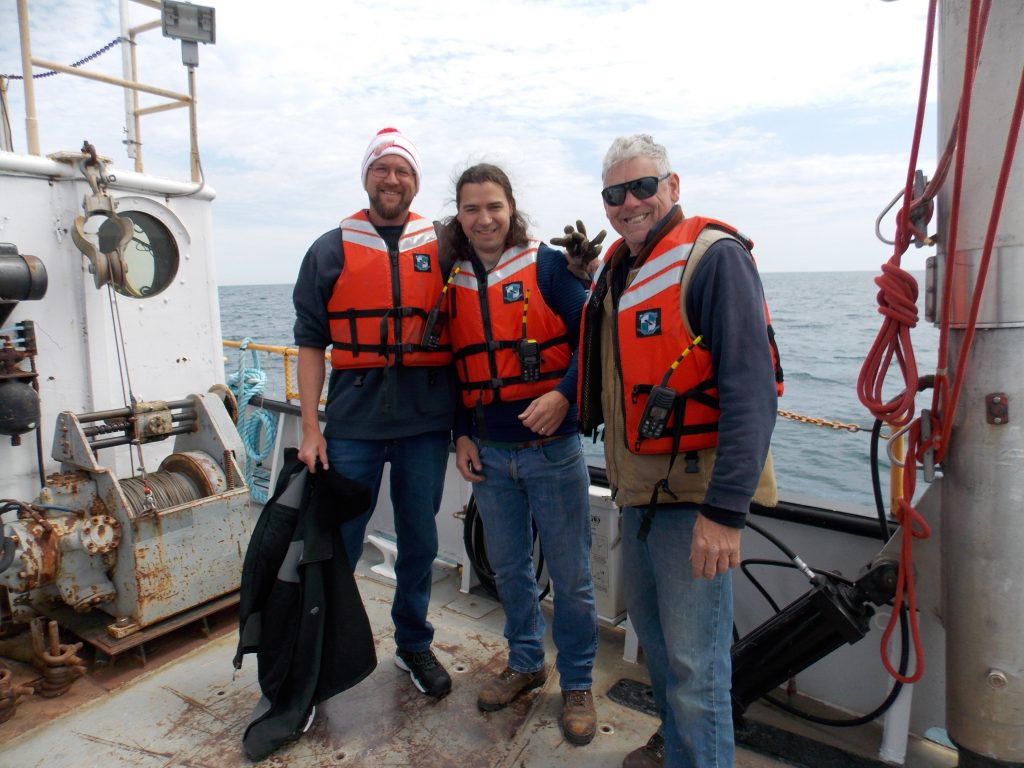When Ron Wesley, president of Salmon Unlimited Wisconsin, met with members of his organization, they had more in common than just loving to catch salmon—many agreed that they needed a buoy.
Salmon Unlimited Wisconsin is headquartered near Racine and focuses on preserving a vibrant Lake Michigan fishery that supports the trout and salmon that many anglers love to catch. But for many members trying to understand the quickly-changing Lake Michigan waters, the nearest buoy was the Atwater 20m buoy, which is deployed north of Milwaukee, over 20 miles away.

“We, the board of directors, were bouncing around ideas of how we could give back to the community,” said Wesley. “At first, it was an abstract idea of, ‘How cool would it be if we had our own buoy that recorded data that was a little more relevant to the territory that we typically frequent?’”
Their main area of interest outside Racine is also a large monitoring gap along the western Lake Michigan coastline. Southern Lake Michigan can be extremely violent producing massive waves and high winds. In a quickly changing lake, knowing real-time conditions is not just necessary for safety and for knowing where to cast lines for salmon, but also for understanding the impacts of climate change on lake patterns.
“The next nearest buoys weren’t in translatable locations to where this one is, meaning that while the information offered good data points, the relevance of that information to the Racine area wasn’t always great,” said Shelby Brunner, GLOS observing technology manager.

So, when GLOS published a call for proposals in 2021 for Smart Great Lakes Mini-grant projects, Ron got to work on a proposal. After being selected for a grant, Ron worked closely with the observing system teams at the University of Wisconsin-Milwaukee (UWM), and GLOS to design and build the buoy, with Jessie Grow from UWM helping to design the buoy’s sensor configuration.
“And although we have helped make sure that it’s running and putting it together and telling them what sensors to buy and things like that, it really is their buoy,” said Grow. “And they’re proud of it, and they’re excited about it.”
The GLOS mini-grant, combined with member donations, was able to fund the purchase, assembly, and spring 2022 deployment of the Salmon Unlimited buoy. On May 24th, the crew sailed 7 miles from Racine and carefully lowered the buoy and mooring hardware off the Neeskay.
The buoy is custom-configured to the needs of the local angler community, equipped with sensors for wind, waves, temperature, and more. Two of the especially notable features are a string of temperature sensors that reach 112 feet below the surface and a current profiler that gives current speed, direction and upward velocity down to 135 feet.
And besides being useful to anglers, Brunner anticipates that these observations will be useful to the scientific community as well.
“Water current data is a highly requested feature by those working to improve Great Lakes movement models,” she said.

Data now is flowing to Seagull every 10 minutes, and local boaters, resource managers, and law enforcement officials are benefitting from the real-time lake insights, Wesley said.
“This project is a good example of how regional partnerships can help expand and sustain the Great Lakes observing network,” said Ana Sirviente, GLOS Chief Technology Officer. “This is at the heart of what GLOS does and is a great example of the spirit behind Smart Great Lakes.”
Beyond this inaugural field season, Grow says that she and the UWM team plans to keep assisting with the Salmon Unlimited buoy, storing and deploying it alongside their existing fleet of buoys.
“I haven’t gotten to go out fishing with him yet,” said Grow. “But he’s promised me that I’ll get to go sometime.”

See the buoy live on Seagull.
Learn more about other Smart Great Lakes Mini-grants.
